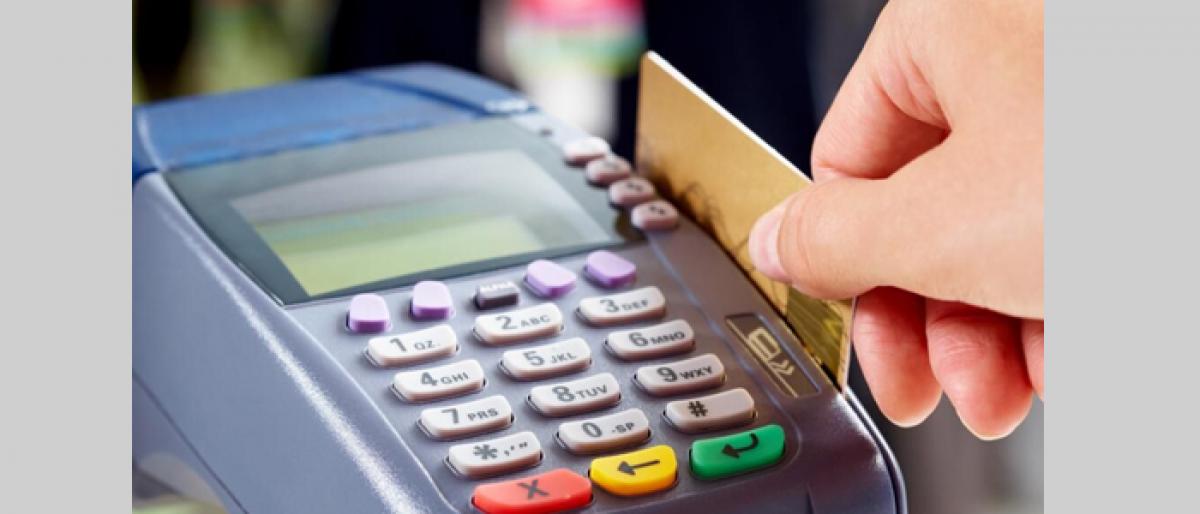Live
- TTD closes Akasaganga, Papavinasam roads
- High costs, limited results: Drone mist-spraying pilot project faces setback
- Poster war on as parties compete for voter attention
- Many dams, tanks filled as rains batter Tirupati dist
- Mayawati, Akhilesh condemn damage to Constitution replica
- Mann slams Centre over ‘one nation, one election’
- Techie suicide case: Mother-in-law flees Jaunpur home
- State government to Supreme Court: New guidelines on how to apply anti-gangster law in UP
- CM Chandrababu to unveil Vision 2047 document today in Vijayawada, traffic restrictions imposed
- State-level LIMES-2k24 inaugurated
Just In

As expected, the six-member Monetary Policy Committee (MPC) comprising RBI Governor Urjit Patel stuck to status quo and kept key repo rate unchanged at 6 per cent during its two-day, bi-monthly monetary policy review that ended on Wednesday. But the decision was not unanimous.
As expected, the six-member Monetary Policy Committee (MPC) comprising RBI Governor Urjit Patel stuck to status quo and kept key repo rate unchanged at 6 per cent during its two-day, bi-monthly monetary policy review that ended on Wednesday. But the decision was not unanimous.
Five members of the committee favoured status quo while one - Ravindra Dholakia, an IIM-Ahmedabad professor – batted for at least 25 bps rate cut. In the previous policy review too, he differed with others. The committee consists of three members from RBI and three independent members nominated by the central government. Therefore, opposition from one member doesn’t make much of a difference, but it’s a good sign that indicates a healthy discussion at MPC meetings.
The committee, like in the recent past, cited upward inflationary pressures as the reason for the status quo. "The MPC took note of the upside pressures from food and fuel prices on the cost of living condition and inflation expectations,” RBI chief Patel averred. In tune with the stance, the apex bank sees a 10-bps upswing in inflation projection to 4.3-4.7 per cent in the fourth quarter from the earlier estimates in October policy review.
However, the central bank retained growth forecast for the current fiscal at 6.7 per cent as spelt at the last policy meeting. That shows some traction in economic activity. Slight rebound in second quarter GDP numbers might have prompted the apex bank to keep the forecast unchanged. It also pointed out about some uptick in credit growth which has been stagnant for quite some time.
But industry is not pleased with the RBI stance, saying cost of funds is very high in the country and that’s what is hampering the growth. However, it’s unlikely that RBI will heed their request and go for a rate cut even in the next monetary policy review, given the inflationary pressures. RBI reiterated its commitment to keep inflation within 4 per cent plus or minus 200 bps. It also retained neutral stance. It may not go for a rate cut unless the central bank changes its stance to ‘accommodative.’
However, in a positive development, RBI decided to rationalise MDT (merchant discount rate) to push cashless transactions. Charges on debit card transactions are one of the key reasons why people are not keen to go for cashless transactions. Debit card transactions accounted for 21.9 per cent of the total transactions at PoS (Point of Sale) terminals in FY17. The percentage continues to remain the same this year too.
Post rationalisation, small merchants will also be incentivised to deploy PoS terminals, a move which will increase cashless domain. On the under-reporting of bad loans by the banks, RBI clarified that it did not change any rules, but made it mandatory for banks to report discrepancies if any. That led to increase in NPAs of some banks, affecting their bottom lines. As RBI said, the move will increase transparency in banks and that bodes well for the sector. All said and done, a rate cut would have spurred economic growth, though!

© 2024 Hyderabad Media House Limited/The Hans India. All rights reserved. Powered by hocalwire.com







